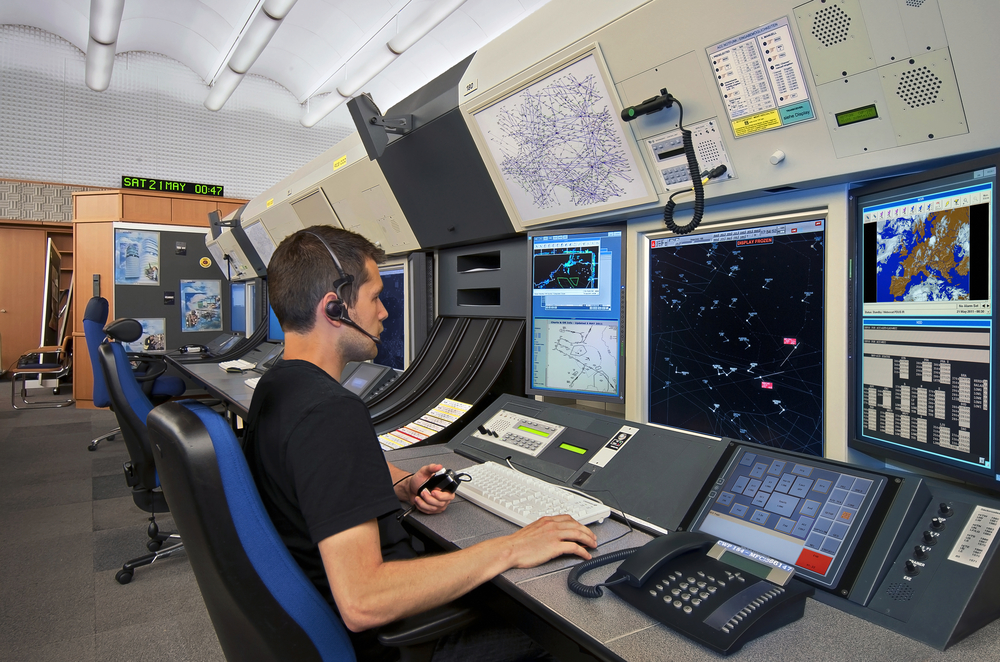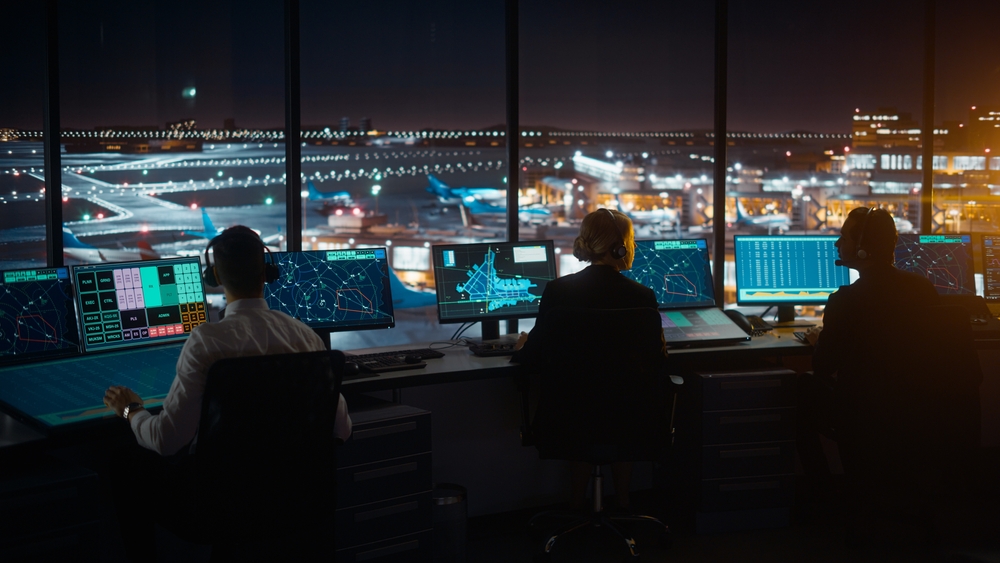Air traffic controllers (ATCs) guide air traffic safely across the globe. Their work is critical. However, there are a number of myths about the air traffic controller job that require clarification. .
Being an air traffic controller involves high stakes and pressure. Controllers are responsible for the safety of many lives. They work under tight time constraints and often face challenges.
In this article, we will debunk common myths about the air traffic controller job. Such myths may mislead aspiring controllers and those outside the aviation world. So, let’s set the record straight and show what it takes to be an ATC!
Table of Contents
Myth 1: Air Traffic Controllers work alone
Debunked: Air traffic controllers never work alone. They are part of a team. In large control towers and centers, controllers manage different sectors of airspace. They coordinate with each other to ensure smooth operations. Even when a controller handles a specific sector, they communicate constantly with others. Controllers stay in contact with pilots and ground staff. Teamwork ensures safety and efficiency. Controllers rely on each other to share information about weather, flight paths, and traffic.
Myth 2: ATC is only about directing aircraft
Debunked: Think air traffic control is just about telling planes where to go? Think again! ATC is a lot more than giving directions to pilots. Controllers keep an eye on the entire airspace, manage weather conditions, and ensure safe takeoffs and landings. They coordinate with the ground crew, handle emergencies, and constantly adjust to changing traffic. It is fast, it is dynamic, and it is never just about pointing planes in the right direction!
Myth 3: Air Traffic Controllers are always in control of the situation
Debunked: Not always! Air traffic controllers deal with unexpected situations all the time. The weather can change in an instant. Planes can experience technical issues. And let’s not forget the busy airspace. Controllers must think fast and adjust plans on the spot. They are not superheroes, they are problem solvers. ATCs work with pilots, ground staff, and other controllers to handle surprises. It is a team effort to stay in control, and sometimes, even the best plans need a quick change!
Myth 4: ATC is only required for commercial flights
Debunked: Air traffic controllers manage much more than commercial airline traffic. They also handle private aviation, military aircraft, helicopters, and cargo planes. As a result, controllers must understand the unique needs of each type of aircraft, adjusting instructions and flight paths accordingly. So, next time you see a private plane, remember – it is still under the watchful eye of ATC.
Myth 5: You do not need to be physically fit to be an ATC
Debunked: While air traffic control is not a physically strenuous job, it does require mental and cognitive fitness. Controllers must have the stamina to focus for long shifts, often under stressful conditions. Physical fitness contributes to overall health, ensuring controllers maintain the alertness required for peak performance.
Myth 6: You can become an air traffic controller without a medical examination
Debunked: You need a medical exam to become an air traffic controller. Both the FAA and EASA require it. The FAA mandates a Class 2 medical certificate for controllers in the U.S. EASA has similar requirements for controllers in Europe. The exam checks your vision, hearing, and overall health. It ensures you can handle the physical demands of the job. Safety comes first in air traffic control!
Myth 7: The ATC job is only about working in control towers
Debunked: The ATC job goes beyond control towers. Controllers work in various settings. They can be found in area control centers, en-route centers, and even airport ground control. They manage airspace, help with flight planning, and monitor aircraft at different stages of flight. The role is not limited to one place – it is spread across multiple locations. For example, en-route controllers manage large expanses of airspace, guiding aircraft at higher altitudes over long distances. Approach controllers manage traffic as it nears airports, guiding planes safely into landing patterns. These positions require similar skill sets and are equally integral to the ATC system.
Myth 8: ATC is a job for young people only
Debunked: ATC is not just for young people. The FAA allows applicants up to 30 years old to apply for air traffic controller positions. However, EASA has no specific age limit, as long as the applicant meets health and fitness standards. Age is not the main factor. Health, fitness, and mental sharpness are what really matter in this job. Experience counts too! Many controllers work well into their 50s and 60s, either in active controller roles or in supervisory and managerial positions.
Myth 9: Air Traffic Controllers only work in large airports
Debunked: Air traffic controllers work at all types of airports, not just large ones. They are needed at small regional airports too. In fact, controllers manage traffic at hundreds of smaller airports across the globe. They handle takeoffs, landings, and airspace management, no matter the airport size. It is about safety and coordination, wherever the airport is.
Myth 10: The air traffic control system is the same worldwide
Debunked: The air traffic control system varies by country. Each region has its own rules and regulations. The FAA oversees the system in the U.S., while EASA regulates Europe. Different countries may use different technologies and procedures. Each country has its own air traffic control system and rules. Even though countries work together, airspace structures can be different. Controllers follow their national rules but also coordinate with international systems.
Myth 11: Air Traffic Controllers cannot take breaks during long shifts
Debunked: Air traffic controllers do not work endlessly. The FAA and EASA have strict rules about shift times. FAA regulations limit controllers to a maximum of 10 hours per shift. They also require regular breaks to prevent fatigue. EASA sets similar standards for controllers in Europe, ensuring they get enough rest. The break regulations under both FAA and EASA are very similar. Both require a 30-minute break for every 4 hours of work. If a shift exceeds 8 hours, both regulations call for additional rest periods. The primary difference is that EASA provides a bit more flexibility for longer shifts, but the overall structure of breaks is essentially the same.
Myth 12: Air traffic services are mostly automated
Debunked: Automation helps, but air traffic control still relies on humans. Controllers make key decisions and manage traffic. The technology tracks planes, but controllers stay in control. They handle emergencies, change flight paths, and react to unexpected events.
The job needs quick thinking and judgment – skills machines cannot replace. While automation is becoming more prevalent in the aviation sector, air traffic control is still very much a human-driven profession. Automation helps in tracking flights, managing communication, and providing situational awareness, but controllers still need to handle complex decisions.
Myth 13: the ATC job is mostly about sitting in front of radar screens
Debunked: The ATC job goes beyond watching the radar. Controllers talk with pilots and coordinate with ground teams. They make quick decisions and adjust flight plans. They monitor the weather, manage emergencies, and keep the skies safe. The work is full of teamwork.

Myth 14: Air Traffic Controllers are not in demand
Debunked: Air traffic controllers are in high demand. Air travel grows every year, and this growth creates a need for more controllers. Many regions face staffing shortages, so agencies actively recruit new talent. The FAA and EASA run regular hiring programs.
Myth 15: Air Traffic Controllers are just a backup to pilots
Debunked: Air traffic controllers do much more than backup pilots. They are vital to maintaining safe and efficient air travel as they provide essential coordination, traffic separation, and safety management in busy and complex airspace.
Myth 16: It is impossible to handle the stress long-term
Debunked: Air traffic controllers train rigorously to manage stress. They learn stress management techniques during their initial training and use support systems and mental health services. With experience, they build resilience.
Myth 17: You cannot become an air traffic controller without a degree
Debunked: In most countries, you do not need a formal degree. In the U.S., you can apply to the FAA Academy without a university degree. In Europe, EASA also allows candidates to pursue ATC careers without a degree. Instead, you must complete rigorous training and meet strict standards. A background in math and science can be very helpful. Both systems focus on skills and aptitude rather than a formal degree.
Myth 18: Air Traffic Controllers are always in control of aircraft
Debunked: Air traffic controllers provide instructions and guidance to pilots, but they do not control the aircraft. Pilots retain ultimate control over their aircraft and follow ATC instructions to ensure safe navigation.
Myth 19: Air Traffic Controllers can handle any number of aircraft
Debunked: There is a limit to how many aircraft an individual controller can manage at once. Each controller is responsible for a specific airspace sector, and managing too many aircraft can compromise safety.
- FAA limits: In the U.S., controllers typically manage 20-30 aircraft in en-route airspace and 10-15 in terminal airspace. Tower controllers usually handle 3-5 aircraft at a time.
- EASA limits: In Europe, controllers manage 25-40 aircraft in en-route airspace and 8-12 in terminal areas. These limits help ensure controllers are not overwhelmed.
Myth 20: Air Traffic Control is a repetitive job
Debunked: Air traffic control is far from repetitive. Every flight is different, and controllers face new challenges constantly. They manage a variety of air traffic, from small planes to large jets, and deal with changing weather, emergencies, and complex flight plans. No two situations are ever exactly the same. The job requires constant attention, quick decision-making, and problem-solving skills. It is an evolving role, not repetitive at all.
Myth 21: Air Traffic Controllers cannot have distractions
Debunked: While controllers must maintain focus during operations, they are not completely isolated from their surroundings. They often communicate with colleagues, respond to inquiries, and follow brief procedures during quiet periods. However, during busy traffic times, all distractions are minimized, and full focus is essential.
Myth 22: Air Traffic Controllers do not deal with weather-related issues
Debunked: Air traffic controllers deal with weather-related issues regularly. They monitor weather conditions that affect flight safety, like storms, fog, or turbulence. They provide pilots with updated weather information and adjust flight paths as needed. Controllers also work closely with meteorologists to ensure safe routing during severe weather. Managing weather is a critical part of their job to ensure flights stay safe and on course.
Myth 23: Air Traffic Controllers have a “set” routine
Debunked: No two days in air traffic control are the same. Every day presents new challenges, with different aircraft, weather conditions, and situations to manage. They must stay adaptable and make decisions on the fly. The job requires controllers to adjust constantly to changing circumstances. Their tasks vary depending on the airspace they manage, traffic volume, and unexpected events. Every shift is unique, keeping the work far from routine.
Myth 24: Becoming an air traffic controller requires significant aviation experience
Debunked: You do not need extensive aviation experience to become an air traffic controller. The required training focuses on air traffic control procedures, communication skills, and safety protocols, not prior aviation experience. Many controllers come from diverse backgrounds, and training programs like the FAA Academy or EASA’s courses prepare you for the role. The key is the ability to learn quickly and make decisions under pressure, not a background in flying.
Myth 25: Air Traffic Controllers are responsible for everything that happens in the air
Debunked: Air traffic controllers do not control everything in the air. They help guide planes and ensure they stay safely separated. Pilots are in control of their aircraft and they make decisions about speed, altitude, and route. Controllers give instructions, but pilots follow them based on their aircraft’s needs. The roles of controllers and pilots are different but work together to keep flights safe.

Air traffic control is a highly complex and demanding job. By debunking these 25 myths about the air traffic controller job, we hope to provide a clearer picture of what it truly takes to succeed in this career.
If you are curious about the myths surrounding our professions, whether it is pilots or cabin crew, be sure to check out our other articles!

